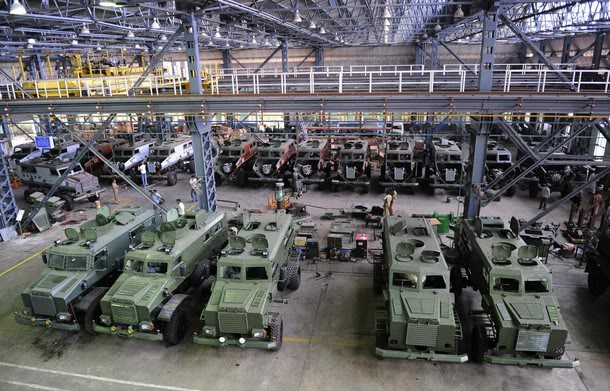By Nantoo Banerjee
With China rapidly developing and deploying potent anti-satellite (A-Sat) weapons, India’s defence industry must work on manufacturing similar defence equipment to bolster the country’s counter space capabilities. The issue has been taken up at the highest level of India’s defence management. Last week, the country’s Chief of Defence Staff (CDS) General Anil Chauhan stressed the need for developing indigenous positioning, navigation and timing (PNT) services by strengthening the NavIC constellation while inaugurating a defence satellite (DefSat) seminar in Delhi. The CDS called for the defence industry’s partnership with the armed forces in augmenting the capabilities by developing multi-sensor satellites, launch-on-demand services, and a network of ground stations. Incidentally, the Indian Space Research Organisation (ISRO) has set up a regional navigation satellite system called ‘Navigation with Indian Constellation’ or NavIC.
Gen. Chauhan said stakeholders in the defence-space ecosystem need to focus on counter-space capabilities as a deterrent for safeguarding India’s space assets. Space can be used as a force-multiplier to enhance combat capabilities in the domains of land, sea and cyber warfare. The country’s armed forces are set to spend Rs. 25,000 crore to meet its defence space requirements. It is the right time for the industry to utilize this opportunity to build a highly capable defence space ecosystem, said Gen. Chauhan. His critical observation came in the light of China’s rapid development and deployment of potent anti-satellite weapons.
Suffice it to say that India’s military services today bank a lot on the domestic corporate sector for the supply of weapon systems and spares. The government has been promoting privatization of defence production. Till April, last year, a total of 606 industrial licences were issued to 369 companies operating in the defence sector. The department of military affairs (DMA) announced four ‘positive indigenization lists’ comprising 411 military items. The foreign direct investment in the defence sector was raised to 74 percent through the automatic route and 100 percent by the government route. Unfortunately, the response from both local and foreign investors has so far been hardly encouraging. Foreign weapons manufacturers are more interested in exports than setting up production facilities in another country.
India continues to be the world’s largest arms importer despite an 11 percent decline in weapons purchases between 2013-17 an 2018-22, according to a study by the Stockholm International Peace Research Institute (SIPRI). The world’s seventh largest country by total geographical area, boasting a population of over 1.4 billion people, a land border of 15,200 kms, 7,516.6 km coastline, and fourth largest military budget, relies mostly on Russia, France and the US to meet its annual critical arms import needs. China is continuously positioning its military might along India’s land borders and coastline, taking full advantage of India’s weak military strength in terms of stockpile of highly modern weapons and its continuous dependence on imports.
Only three majority state-owned Indian defence manufacturing companies feature in the list of the world’s top 100 arms producing firms, dominated mostly by US and Chinese companies. The three Indian PSUs are: HAL ranked 41st, BEL (63rd), and Mazagaon Docks (89th). The US, Russia and China meet the need for all their lethal weapons systems by manufacturing them domestically. Among China’s most modern weapons manufacturers are: China Aerospace Science and Technology Corporation, China Electronics Technology Group, Norinco, and China South Industries group. Among the world’s top twelve arms manufacturers by revenue, as many as four are from China. They are ranked 7th, 8th, 9th and 11th. The top five manufacturers, led by Lockheed Martin, are from the US. BAE Systems of the UK is ranked 6th. Rostec of Russia ranked 10th. And, the 12th placed L3Harris Technologies is from the US.
For reasons best known to the government and the country’s political dispensation, India did now allow its private sector to manufacture arms and weapons for decades while the government and the military brass found themselves highly comfortable in buying and importing arms from foreign private enterprises, often through agents. There were several reports of financial corruption involving top political leaders, bureaucrats and defence personnel in import of arms, right from the days of Pandit Nehru. This delayed the domestic arms manufacturing programme for years. While Asian countries such as China, South Korea and Israel positioned themselves in the list of the world’s top 10 arms manufacturing nations, India has prided itself of being the world’s top arms importer for years.
The global defence market had grown from $535 billion in 2022 to 577 billion in 2023, a CAGR of 7.9 percent. The global arms industry has been further booming since the beginning of the Ukraine-Russia war and Israel-Hamas war. Lockheed Martin was awarded contracts worth $45.68 billion in 2022 by the US defence department which made up for nearly 70 percent of the arms producer’s annual revenue. The growing India-China border tension has been to the advantage of a number of foreign arms suppliers to India. For instance, France’s arms exports to India rose sharply, surpassing the US to become India’s second-largest arms supplier after Russia.
Globally, defence production is a big industry, contributing substantially to the manufacturing country’s GDP, employment generation and income. India had missed the bus. If India followed the Chinese model to become reasonably self-sufficient in arms production, the country’s GDP would have probably topped the $5-trillion mark by now, generating massive employment and income. The latest privatization move is yet to produce any noticeable result. India’s Chief of Defence Staff Gen. Chauhan’s plea to the defence industry to work closely with the military for the development of a strong indigenous fire power is highly significant and timely. The industry should also work with the Defence Research and Development Organisation (DRDO) to speed up the production of newer categories of arms and ammunition. Last year, the Indian government approved purchases of missiles, helicopters, artillery guns and electronic warfare systems worth $8.5 billion to add more teeth to its military. The domestic industry must try to take as much advantage of it as possible. (IPA)


